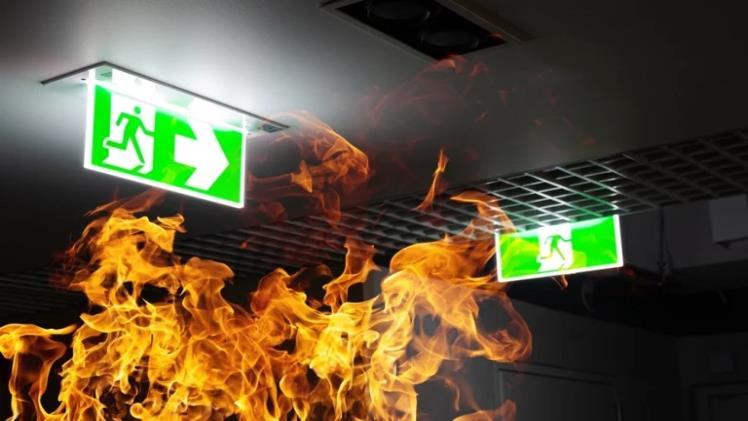
In an era where workplace safety is paramount, fire risk assessment stands as a critical component in safeguarding both business operations and employee well-being. With the potential for devastating consequences, including loss of life, property damage, and financial upheaval, it is essential for organizations to proactively identify and mitigate fire hazards. A comprehensive fire risk assessment not only fulfills legal obligations but also fosters a culture of safety, enhancing employee morale and productivity. This process involves a systematic evaluation of potential fire hazards, the implementation of preventive measures, and the development of an effective emergency response plan. By understanding the unique risks associated with their specific environment, businesses can tailor their strategies to address vulnerabilities effectively. This article outlines the essential steps in conducting a thorough fire risk assessment, providing practical insights for business leaders and safety officers alike. By prioritizing fire safety, organizations not only comply with regulations but also protect their most valuable assets—their employees and their reputation. As we delve into the key steps of fire risk assessment, we aim to equip businesses with the knowledge needed to create a safer working environment and ensure resilience in the face of potential fire-related incidents.
Understand fire risk assessment benefits for your business operations and employee safety.
Implementing a fire risk assessment provides numerous advantages that enhance both business operations and employee safety. By systematically identifying potential fire hazards and evaluating the risks associated with them, organizations can take proactive measures to mitigate those risks. This not only safeguards physical assets and minimizes potential financial losses but also fosters a culture of safety among employees. When staff members are aware of fire risks and the measures in place to address them, their confidence and productivity can increase, resulting in a more efficient work environment.
Moreover, regular fire risk assessments ensure compliance with regulatory requirements, which can help avoid legal repercussions and associated costs. Organizations that demonstrate a commitment to fire safety through rigorous risk assessment practices are likely to enhance their reputation, thereby instilling greater confidence among clients and stakeholders. This comprehensive approach ultimately contributes to a resilient business framework that prioritizes both operational continuity and the well-being of its workforce.
Identify potential fire hazards in your workplace to mitigate risks effectively.
Conducting a thorough fire risk assessment involves a meticulous examination of the workplace to identify potential sources of ignition, fuel, and oxygen that may contribute to fire hazards. Common areas of concern include electrical systems, flammable materials, and inadequate storage practices, which can significantly increase the likelihood of a fire incident. By implementing regular assessments, organizations can pinpoint these hazards and take decisive action to mitigate risks, such as improving storage protocols, ensuring electrical safety, and maintaining clear access to fire exits.
In addition to identifying physical hazards, a comprehensive fire risk assessment should also encompass employee training and emergency response plans. Ensuring that employees are well-versed in fire safety protocols and evacuation procedures is critical for minimizing risk and enhancing overall safety. By fostering a proactive approach to fire risk management, organizations can not only protect their assets but also create a safer working environment that prioritizes the well-being of all employees.
Implement and review emergency procedures regularly for enhanced fire safety compliance.
the effectiveness of their emergency procedures through regular reviews and updates. These procedures serve as vital guidelines for employees during critical situations, ensuring that everyone knows their roles and responsibilities in the event of a fire. Regular implementation and review allow organizations to adapt to any changes in the workplace, such as new layouts or processes, which can affect evacuation routes and safety protocols. Additionally, conducting drills enables employees to practice emergency responses, reinforcing their confidence and readiness to act swiftly and safely when faced with a real emergency.
To enhance fire safety compliance, organizations should also stay informed about the latest regulations and industry best practices. Continuous training and awareness programs can empower employees to remain vigilant against potential fire hazards. By committing to a culture of safety that prioritizes ongoing assessment and refinement of emergency procedures, businesses can significantly reduce the risk of fire incidents and ensure a safer environment for everyone. Regular reviews not only enhance compliance with fire safety regulations but also contribute to a more resilient and prepared organization.
In conclusion, conducting a thorough fire risk assessment is not just a regulatory requirement but a vital component of safeguarding your business and its most valuable asset—your employees. By systematically identifying potential hazards, implementing effective prevention measures, and ensuring that all staff are trained in emergency protocols, you can create a safer work environment. Regular reviews and updates of your fire risk assessment will further strengthen your preparedness and resilience against potential fire incidents. Investing time and resources into these essential steps not only protects your business from potential losses but also fosters a culture of safety and responsibility within your organization.
